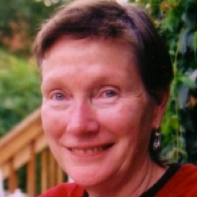Part two in a series on awareness practice. Click for part one.
It is important to realize that to have post-meditation experiences of insight, there needs first to be some meditation!
This may seem obvious, but many somewhat casual or jaded practitioners consider daily life their sole “practice”—and this is deceiving unless one is a master of meditation for whom the boundary between meditation and post-meditation has dissolved.
For most of us daily practice of at least 10-15 minutes a day is so helpful. And, if it is done at the beginning of the day, then the rest of the day can be considered “post-meditation.” There is no guarantee that insight will dawn post-meditation, but so often we have flashes of insight during the day, recognizing that our roles, names, and experiences are all impermanent or that those roles are mere fabrications, which do not comprise any solid or continuous “I.”
Thus both in practice (see part one) and in post-meditation insight can merge with a sense of space. This is marked by feeling more flexible and light. We do not cling to concepts (“my way”) and do not take ourselves so seriously, especially when during meditation we have had flashes of not finding any self to be serious about!
Furthermore, when we see the gaps that appear between thoughts and how words work to reify their solidity, we begin to be curious post-meditation and question concepts composed of thoughts—how easily so many deconstruct!
For example, perhaps previously we believed that East was East and West was West and that never the two should meet. But if we consider how, if we were to continue to head West, we would eventually travel to what is considered the “East.”
As practitioners get used to mixing mind with space in practice, post-meditation things are seen from that more expansive view, and from the point of view of space there are no absolute directions! There is no absolute “up” or “down,” North or South etc. And then it is seen that so many distinctions are only relatively true. For example, my son Waylon is “tall” from my point of view. But next to Usain Bolt, he’s “short”!
Distinctions are useful for navigating in the relative world, but as with awareness practice, we begin to see a fuller picture, and this more vast and penetrating insight further opens our heart. Because space and emptiness are free from boundary and territory, the natural warmth of our Buddha Nature extends to all we meet. For example, it is so much easier to meet someone who has insulted or hurt us in the past with a fresh start; “enemies” become friends if we do not label them as “enemies” and keep our hearts open.
With awareness we appreciate everything more. As Thich Nhat Hanh says, “If you live in awareness, it is easy to see miracles everywhere…Eyes that see thousands of colors, shapes, and forms; ears that hear a bee flying or a thunderclap…”
And as we continue to practice and touch our basic human warmth and humor, we suffer less because we can accommodate more. When we are open, we can let go more easily of habitual patterns; they are less seductive, having seen through them in meditation. As Trungpa Rinpoche said, “as we “relax more, everything is workable.”
Presented with a tense situation, when we feel ourselves tighten, we can still breath out, sigh a one second “meditation,” and give our inner warmth a chance to rise to the occasion.
The motivation to be awake and aware post-meditation as well as in meditation is, in itself, a huge step on the gradual path of wisdom and compassion.
~
Ed: Kate B.
Like elephant meditation on Facebook.
 Share on bsky
Share on bsky





Read 5 comments and reply